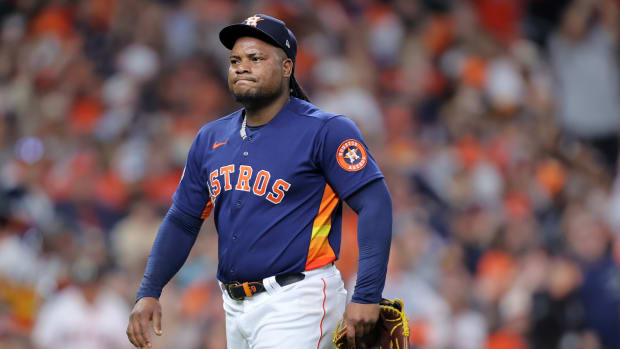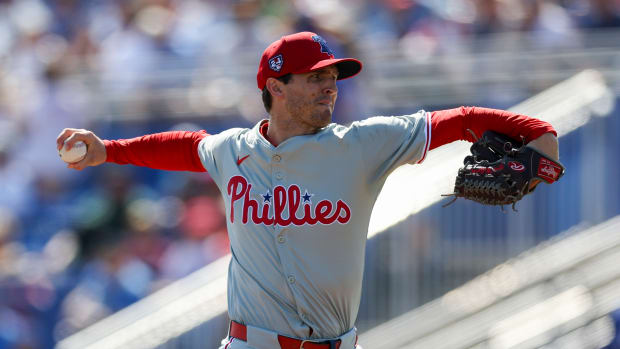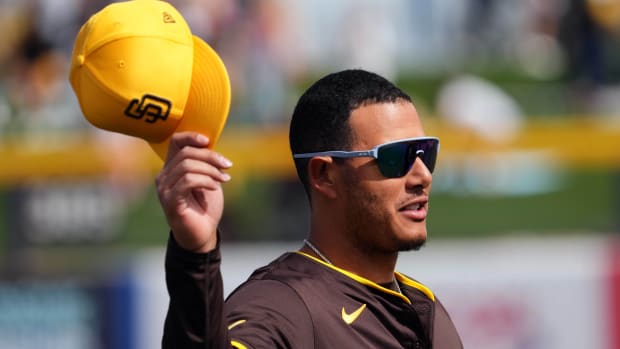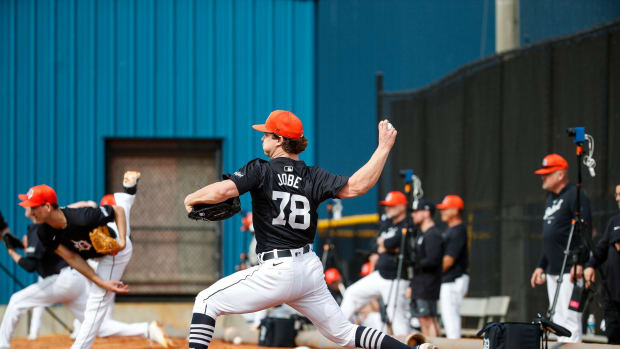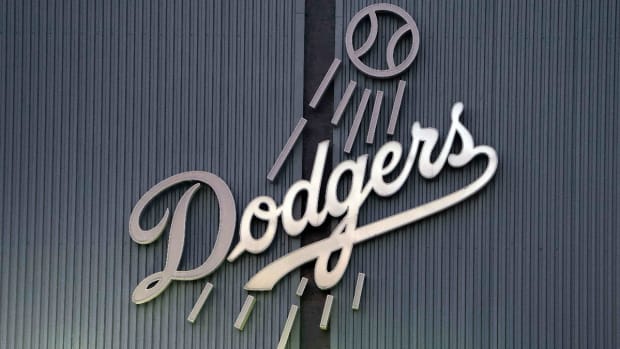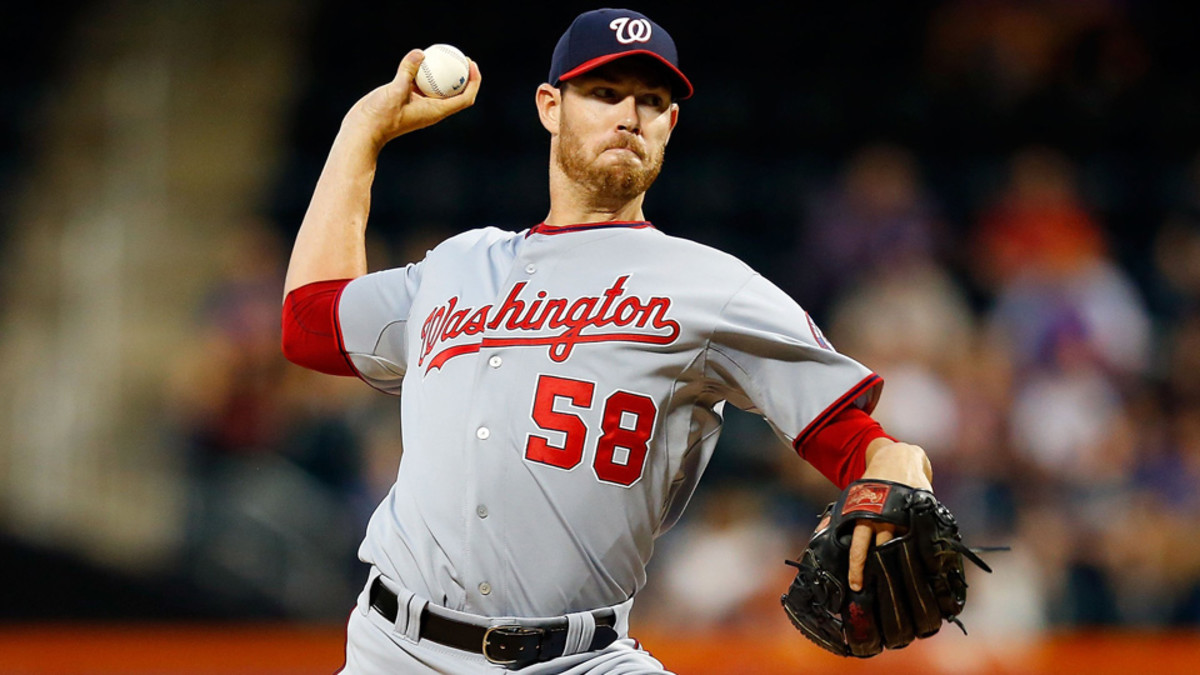
In Doug Fister, Nationals got unlikely ace from Tigers at bargain rate
Tigers fans have come to trust Dave Dombrowski, and to embrace the general manager’s aggressive trading that almost always seems to work out. Last December, though, the man locally known as Dealin’ Dave made a move that didn’t sit right with his club’s fans, as Steve McCatty saw first hand.
McCatty was born in Detroit and still lives there over the winter. On the evening of Dec. 2, a Monday, he was volunteering at Lutheran High Northwest, which his children had attended, moving tables and other furniture from here to there. All of a sudden, someone looked up from his smartphone, with his eyes wide, and soon the news was bubbling through the school’s halls: The Tigers had traded Doug Fister to the Nationals for three players, headlined by the lefthanded pitching prospect Robbie Ray. "They were upset," McCatty said of the other parents. "I was happy. Everybody else there wasn’t."
For most of the year, McCatty serves as the Nationals’ pitching coach, and now, unexpectedly, he had a new piece to work with — a big piece, as the 30-year-old Fister stands 6-foot-8. Since the Tigers acquired him from the Mariners in 2011, he had gone 32-20 with a 3.29 ERA; of the eight playoff games he started, Detroit won six of them. He was the type of pitcher who would try to track down even the foulest of balls — by the time one lands in the upper deck, you’ll usually find Fister at the dugout’s railing, peering up at it — and who would, perhaps foolishly, stay in a World Series game after a line drive had ricocheted off his skull, as happened against the Giants in 2012.
He seemed, in other words, to be just the sort of pitcher who might continue to play a steady role in a Tigers rotation stocked with Cy Young winners, and at a relatively bargain rate: He is making $7.2 million this year and won’t become a free agent until after next season. But Dombrowski traded him, and Tuesday night was one on which both he and the parents of Lutheran High Northwest might have wished that he had not. "You can’t knock the rotation Detroit has," said Nationals starter Gio Gonzalez. "But it was fortunate that we got a nice jewel out of that treasure box."
TAYLER: How injuries to Soria, Sanchez could sink Tigers in Central
In the two weeks since Dombrowski acquired David Price from the Rays, his rotation has suffered twin blows in the form of injuries to Anibal Sanchez and Justin Verlander, and the Tigers have fallen out of first place in the AL Central. Dombrowski was forced to call up the 22-year-old Ray to start Tuesday night’s game against Pittsburgh, and it didn’t go particularly well. Ray allowed four runs over five innings — in five big league appearances, he’s now 1-2 with a 5.31 ERA — and the Tigers lost their fourth straight.
In New York, meanwhile, Fister turned in the type of outing that has become standard for him in his first season with the first-place Nationals, pitching seven shutout innings in a 7-1 victory, thereby raising his record to 12-3 and lowering his ERA to 2.34. In the 17 starts Fister has made since debuting for Washington on May 9 (a strained lat caused him to miss the season’s first month), he has ten times pitched at least seven innings while allowing two earned runs or fewer. In a rotation stocked with All-Stars and annual Cy Young contenders like Gonzalez, Stephen Strasburg and Jordan Zimmermann, Fister, so far, has the best bottom line.
Nationals debutant Michael Taylor impresses, starts career on right note
Fister also stands out stylistically on a largely power pitching staff. Whereas Strasburg, Gonzalez and Zimmermann all rank in the league’s top-35 in strikeout rate, Fister is 70th of the 77 pitchers who have worked more than 100 innings, at 5.6 whiffs per frame. Despite his height, Fister does not throw particularly hard (his fastball averages around 92 miles an hour), and must rely on a more cerebral approach. "It just goes to show it’s not all about power," said Gonzalez, who can throw 95 but who has uncharacteristically struggled at times this season, and has an ERA of 4.00. "I need to start using that brain like he does."
Fister’s success, on a technical level, stems from three central factors. One is his outstanding control: His walk rate of 1.1 per nine innings is third best in the league behind those of Hisashi Iwakuma and Phil Hughes. ("He can throw the ball where he wants, when he wants," Zimmermann said.) A second is the quick pace with which he operates. According to FanGraphs, Fister averages just 18.9 seconds between pitches, making him the fourth-fastest worker in the league.
The third is his deceptive delivery. Opposing batters say that they perceive a spider-like whirl of lanky arms and legs, and then suddenly, the ball is on top of them. "I’m never exactly sure where the ball’s at," said Mets outfielder Curtis Granderson. "The way he moves his body around, you don’t pick the ball up until a little later than normal."
MLB Power Rankings: Royals' win streak carries Kansas City into top-10
"He’s quick, and he’s got a little funk," McCatty explained. "He stays closed for a long time, and he releases the ball high, with some angle. It’s hard for hitters to see. A guy that flies open with his arm, and you can see the ball way back at second base, that’s easy to track."
Fister, of course, excels in other ways. He never panics with runners on base, and in fact strands 84.6 percent of them there — the league’s second-best rate, and one that is particularly notable for a pitcher who can rarely extricate himself from an inning with a strikeout. He is also an excellent fielder, one of three finalists for last year’s AL Gold Glove at his position.
He is, in other words, precisely the kind of eminently reliable starter than any genuine contender would like, as the Nationals have discovered. While Robbie Ray is very young and has years to equal or even surpass the player with whom Tigers fans will always connect him, so far the trade that brought him to Detroit seems to be bearing out their initial reaction to it: It was one trade too many.






























